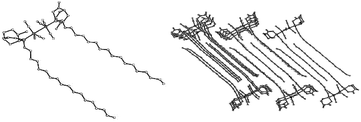Limonene-derived phosphines in the cobalt-catalysed hydroformylation of alkenes
Abstract
Cobalt complexes involved in the hydroformylation of

* Corresponding authors
a
School of Chemistry, University of St. Andrews, St. Andrews, Fife, Scotland, UK
E-mail:
djc@st-and.ac.uk
Fax: +44-(0)1334-463808
Tel: +44-(0)1334-463805
b Catalyst Evaluation and Optimisation Service, School of Chemistry, University of St. Andrews, St. Andrews, Fife, Scotland, UK
c Research and Development, Sasol Technology (Pty) Ltd., P.O. Box 1, Sasolburg, 1974, South Africa
Cobalt complexes involved in the hydroformylation of

 Please wait while we load your content...
Something went wrong. Try again?
Please wait while we load your content...
Something went wrong. Try again?
A. Polas, J. D. E. T. Wilton-Ely, A. M. Z. Slawin, D. F. Foster, P. J. Steynberg, M. J. Green and D. J. Cole-Hamilton, Dalton Trans., 2003, 4669 DOI: 10.1039/B310233E
To request permission to reproduce material from this article, please go to the Copyright Clearance Center request page.
If you are an author contributing to an RSC publication, you do not need to request permission provided correct acknowledgement is given.
If you are the author of this article, you do not need to request permission to reproduce figures and diagrams provided correct acknowledgement is given. If you want to reproduce the whole article in a third-party publication (excluding your thesis/dissertation for which permission is not required) please go to the Copyright Clearance Center request page.
Read more about how to correctly acknowledge RSC content.
 Fetching data from CrossRef.
Fetching data from CrossRef.
This may take some time to load.
Loading related content
